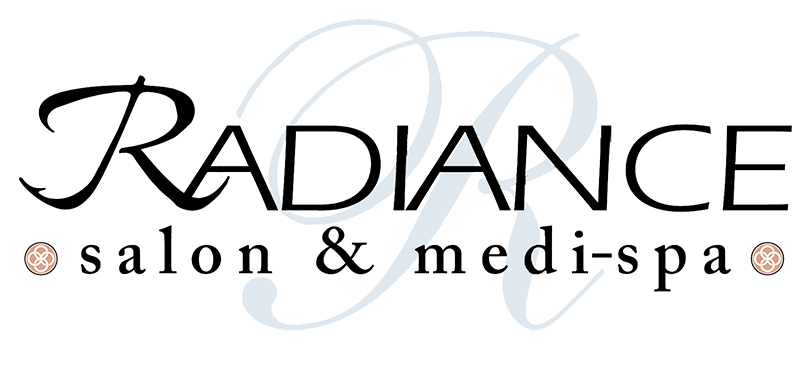Placeholder
Show Hierarchy : home / symptoms / male symptoms / fatigue in men
Understanding Bio-Identical Hormone Replacement Therapy
Bioidentical hormone replacement therapy is an effective treatment using hormones that are identical to the hormones naturally made by your body. Bioidentical hormone replacement therapy (BHRT) has transformed the healthcare of men and women as they enter the later stages of life. It provides an alternative to hormones that are synthetic, such as injectable testosterone, or hormones concentrated from horse urine (Premarin).
Bioidentical Hormone Replacement Therapy is made by compounding pharmacists in customized dosages based on the individual needs of the patient as opposed to the narrow choices available with mass-produced, or “one size fits all” hormone therapies.
A more natural approach to hormone therapy often referred to as “natural hormone therapy” has focused attention on bioidentical hormones that are identical in molecular structure to the hormones that the male and female body naturally produces for itself.
Although not found in this form in nature, they are derived and made from plant compounds extracted from yams and soy. The result is often the relief from symptoms of hormone deficiency, from insomnia, chronic fatigue, memory loss, and loss of libido.
Blood tests that measure total estradiol or testosterone are used to detect both a deficiency or excess of estrogen or testosterone the body produces as well as to monitor the effects of bioidentical hormone replacement therapy.
On the other hand, Premarin, the old standby estrogen used for decades, is metabolized into various forms of estrogen that can be dangerous and cannot be measured by standard laboratory tests. Proponents of bioidentical hormones say that an advantage is more precise monitoring of hormone levels and individualized treatment. Other benefits include calmer mood, reduced body fat, increased energy levels, increased sex drive, stronger mental clarity, and improved muscle tone and mass, among other
The menopause side effects and symptoms can begin to affect a woman years before menopause actually begins. This period of time is known as perimenopause and is defined by the hormonal changes that occur as the body transitions into menopause. During this time, the ovaries begin to produce less estrogen and progesterone and, in some cases, affect levels of testosterone as well.
Diminishing levels of sex hormones can lead to the uncomfortable symptoms associated with menopause, including poor sleep, low energy, weight gain, low libido and mood swings. These are a just a few of the symptoms. Experts have defined a list of 34 menopausal symptoms that may affect a woman as she approaches menopause. Not all women will experience every symptom. The good news is that if you are experiencing distress and discomfort due to any one of these menopausal symptoms, there are effective treatment options available.
34 Symptoms of Menopause (And What You Can Do About Them)
1. Hot Flashes
Hot flashes are the most well-known symptoms of menopause, affecting approximately 50 percent of menopausal women. Hot flashes are a sudden sensation of feverish heat that can spread through the body, creating a flushing, or redness, particularly on the face.
2. Irregular Periods
Irregular periods can occur throughout the lifecycle for a variety of reasons. During menopause, the regular increase and decrease of estrogen and progesterone that once signaled the start and stop of the menstrual cycle becomes unbalanced. This imbalance can cause your cycle to come earlier or later than expected and may cause the flow to be abnormally heavy or light.
3. Fatigue
Fatigue is a sluggish, tired-all-the time feeling that cannot be remedied with a good night’s rest. The condition can make simple tasks of daily living difficult and impact productivity, mood and even sleep quality. Chronic fatigue can occur during menopause and drastically affect quality of life, including putting a strain on relationships, diminishing productivity at home or work and increasing stress.
4. Memory Lapses
Memory loss or foggy thinking is a common symptom of menopause. Estrogen and progesterone are both believed to play a role in memory, therefore decreasing levels may contribute to memory lapses. The condition is believed to be a temporary side effect of menopause and women will experience improvements when the transition through menopause is complete.
5. Night Sweats
Night sweats are excessive sweating associated with hot flashes that occur during the night. Night sweats can be disruptive to the sleep cycle and may even cause stress or anxiety for many women during the day. Like hot flashes, night sweats are the result of a hormonal imbalance.
6. Loss of Libido
A disinterest in sex can occur during menopause. This may happen because menopause can make sex painful due to other symptoms like vaginal dryness. Perimenopausal low libido can also occur because fluctuating hormone levels can cause sexual desire to wane. Some women may experience depression or irritability during menopause, which can also affect sexual health.
7. Vaginal Dryness
Vaginal dryness occurs when the decline of estrogen levels before and during menopause cause the natural moisture of the vagina to diminish. This effect can make natural lubrication difficult to impossible, leaving many women in pain during sexual intercourse.
8. Mood Swings
Fluctuating hormone levels during menopause can impact neurotransmitters in the brain. These neurotransmitters, like GABA and serotonin, regulate feelings of calm and the pain-pleasure centers of the brain. When hormones are out of balance, these neurotransmitters may be impaired leading to erratic mood swings, such as anger to sadness or extreme happiness to hysterical crying.
9. Panic Disorder
Panic disorder is characterized by debilitating emotional episodes that are the result of an irrational anxiety or fear. Signs of panic disorder include feelings of dread, rapid heartbeat, shallow breathing, and feelings of extreme terror.
10. Urinary Tract Infection
Low estrogen levels can induce changes in the vaginal bacteria resulting in frequent urinary tract infections.
11. Bloating
Bloating is characterized by a feelings of extreme fullness, tightness or a swelling of the belly. High levels of estrogen can cause water retention. Estrogen can rise and fall throughout the perimenopausal period.
12. Hair Loss or Thinning
Hair loss during menopause is caused by low levels of estrogen. Hair follicles require estrogen to grow and stay healthy. Hair may become drier and more brittle, and may break or fall out in the shower or while brushing.
13. Sleep Disorders
Sleep disorders, such as insomnia, sleep-disordered breathing, night sweats and anxiety can occur during menopause. These disorders may be a direct effect of menopause or a side effect of the physical and emotional stress of the transition.
14. Dizziness
Dizziness associated with menopause may come on suddenly and last only a few minutes or become extended and frequent. Women who experience frequent or extended dizzy spells during menopause are at risk of falling, which could further impair quality of life.
15. Weight Gain
Weight gain is common symptom of menopause that comes as a surprise to many women. The hormonal changes that occur with menopause not only make it difficult to lose weight, but can also diminish muscle and lean body mass. These changes can cause fat to redistribute, often collecting in the abdomen. During menopause women should exercise regularly, including weight-bearing exercises, and practice good dietary habits to revitalize and maintain muscle tone and a strong metabolic rate.
16. Incontinence
The reduced levels of estrogen that occur during menopause can thin the walls of the urethra causing incontinence. There are two types of incontinence that may occur. Urinary incontinence occurs when the internal muscles of the pelvic floor fail to work effectively, causing urinary leakage when laughing, sneezing, coughing or engaging in rigorous activity. This is often a result of weak pelvic floor muscles that occur with age, childbirth and surgery. Overflow incontinence is the absence of the sensation of a full bladder. Accidental urination occurs because the brain and body fail to communicate that the bladder is full.
17. Headaches
When the body begins to slow production of estrogen, many women experience more headaches. Headaches can become more intense as hormone levels continue to drop during perimenopause. As the transition completes, headaches should become less frequent.
18. Burning Tongue
Changes in estrogen levels can cause a metallic taste in the mouth during menopause. This may also be accompanied by a pain or burning sensation on the tongue, lips, gums or other spot in the mouth. Scientists are still unclear as to the root cause of the pain and burning.
19. Digestive Problems
Estrogen helps keep cortisol levels low. High levels of cortisol are known to slow digestion. As estrogen levels decline during perimenopause or menopause, cortisol levels rise, slowing digestion. This can leave many women feeling bloated or constipated and some may experience routine abdominal pain and discomfort.
20. Muscle Tension
Muscle tension during menopause is defined as tight or strained muscles in the neck, back and shoulders, or sudden increases in stiffness, aches, or soreness throughout the body.
21. Allergies
The hormonal fluctuations that occur with menopause can impact the body’s immune system. For this reason, many women will experience an increased sensitivity to allergens. Some women may experience only mild symptoms when exposed to allergens, such as rashes, itchy eyes and sneezing. Others, however, can have more extreme allergic reactions like dizziness, cramping and swelling.
22. Brittle Nails
Just as estrogen is vital for healthy hair, it is also essential to keeping the nails long and strong. Low levels of estrogen before and during menopause can cause nails to become brittle and dry.
23. Body Odor Change
Menopause has been known to cause changes in a woman’s natural scent. In most cases, this change is due to the increased production of sweat. The drop in estrogen levels sends false messages to the hypothalamus telling the body it is hot and therefore increasing sweat production to initiate cooling.
24. Itchy Skin
Collagen loss is often observed in the initial stages of perimenopause and menopause. When estrogen levels drop, collagen production slows down. Collagen gives the skin a youthful appearance. Low collagen production can lead to thin, dry, itchy skin all over the body and diminish the youthful appearance of the skin.
25. Osteoporosis
Estrogen is a key hormone for maintaining bone density. Throughout life, estrogen inhibits bone resorption. When estrogen levels drop during menopause, bone loss can accelerate rapidly. This puts postmenopausal women at risk for osteoporosis—a degenerative bone disorder, characterized by the weakening of the bone, and a general decrease in bone mass and density. Though it is impossible to rebuild bone density, women can maintain their current bone density by engaging in routine weight-bearing exercise and eating a balanced diet, rich in vitamins and minerals from plant sources.
26. Tingling Extremities
Perimenopause/menopause symptoms may also include a tingling sensation that generally affects the arms, hands, legs, and feet. This can feel like a burning or insect sting all over the skin.
27. Insomnia
Insomnia during menopause is typically a side effect of other perimenopausal and menopausal symptoms, such as hot flashes, night sweats, anxiety and panic disorders. Low levels of progesterone that occur during menopause, however, have been linked to poor sleep as well.
28. Difficulty Concentrating
An inability to focus or difficulty concentrating can affect women throughout perimenopause and menopause. This symptom is generally most noticeable in the early stages of hormonal decline. However, it can be made worse by other symptoms, such as poor sleep or mood swings. Decreasing levels of estrogen and progesterone, which both play a role in memory and focus are also contributing factors.
29. Irregular Heartbeat
Estrogen deficiency can overstimulate the nervous and circulatory systems, causing irregular heartbeat, palpitations, and arrhythmias. This symptom should be reported to a medical professional immediately.
30. Anxiety
The drop in estrogen that occurs with perimenopause and menopause negatively influences the production of neurotransmitters such as dopamine and serotonin that play a vital role in regulating mood. This can lead to anxiety and make it difficult to relax and find calm.
31. Depression
The declining levels of progesterone and estrogen that occur during perimenopause/menopause cause a myriad of symptoms that drastically change a woman’s quality of life—generally not for the better. This can result in feelings of sadness that may evolve into depression. Progesterone and estrogen also influence neurotransmitters that regulate mood. When levels of these hormones drop, menopausal women may also find it difficult to restore happiness and calm after bouts of sadness, anxiety, and irritability, which can also contribute to depression.
32. Breast Pain
Breast pain and tenderness in one or both breasts is a side effect of the hormonal fluctuations that occur during menopause. Breast soreness generally disappears once the menstrual cycle stops completely and estrogen is no longer produced.
33. Joint Pain
Falling estrogen levels are to blame for joint pain that may occur with menopause. Estrogen is believed to help manage inflammation levels throughout the body. Women may feel an aching or tingling in the fingers, tightness in the hips, soreness in the knees or swelling of various joints, as estrogen levels decline. This can lead to arthritis. Diminishing bone density may also contribute to joint pain and soreness during menopause. Routine physical activity and stretching can help reduce joint pain and swelling. A diet rich in plant-based nutrients and low in animal products can also fight arthritis pain.
34. Electric Shock Sensation
The fluctuating estrogen levels during perimenopause and menopause can also cause an electric shock sensation in various parts of the body. This sensation is like the feeling of a rubber band snapping between your skin and muscle and often occurs as a precursor to hot flashes. These are usually brief, but quite unpleasant.
Living with Menopause
Reading through this list of potential symptoms can make perimenopause and menopause seem almost unbearable. Some women may be affected by menopausal syndrome—enduring symptoms for years beyond menopause. However, women do not have to live with these uncomfortable symptoms at any stage. As you may have noticed, the primary cause of most symptoms is fluctuating levels of estrogen and progesterone, or hormonal imbalance.
More than 10 major medical organizations endorse hormone therapy as the best treatment for menopausal symptoms. Bioidentical hormone therapy is known to offer the safe and effective outcomes because of their structural match to human endogenous hormones. You don’t have to suffer with any one of these 34 symptoms of menopause. The expert physicians of the Med-Health 360 are highly-trained in hormone health and can develop a comprehensive treatment plan that includes hormone therapy, fitness recommendations, nutritional guidance and pharmaceutical-grade supplements to bring relief from menopausal symptoms and restore overall health and quality of life.
Click here to read important information on estrogen therapy.
Get Info on Other Males Symptoms
Fatique
Weight Gain
Insomnia
Depression
Erectile Dysfunction
Prostate Conditions
Sleep Apnea
Low Sex Drive
Muscle Loss
Irritability
Muscle Loss
Hot Flashes
Hair Loss
Osteoporosis
Sleep Apnea
Percentage of Men Experiencing Andropause Symptoms By Age

Frequently Asked Questions
Bio-Identical Hormone Replacement Therapy (BHRT) has actually been used in the United States since 1938. Bio-identical Hormones are all natural plant based products made from yams and a small amount of soy. These hormones have the same molecular structure as the hormones produced within our own bodies. There are numerous studies worldwide that document the benefits and safety of BHRT. These studies also report a lower incidence of side effects when compared with prescription drugs. BHRT should not be confused with “synthetic hormones which are typically found in many creams, gels and injectables used for hormone replacement.
BHRT is a short, simple in-office procedure using local anesthesia. Your doctor will insert the pellets into the fatty layer just beneath your skin. In men and women, a small incision is made in the buttocks or in the lower abdomen. The process is painless and takes just a few minutes.
One of greatest advantages of pellet therapy is the low incidence of side effects. Although extremely rare, side effects may include: slight bruising, minor bleeding, infection or extrusion of the pellets.
Your doctor will interpret your blood tests and determine an appropriate dosage specifically designed for your body. Women who receive estrogen can feel significantly better in 24-36 hours. Men and women who receive testosterone will start to feel relief of symptoms in 10-14 days. After your pellet insertion, you should avoid vigorous exercise for a few days as directed by your physician. Your doctor will evaluate your hormone levels on an ongoing basis and monitor any future changes needed.
You can obtain BHRT Pellets by scheduling an appointment with a trained, certified physician who specializes in hormonal therapy. In order to obtain the correct dosage and proper placement of the pellets, the doctor should be knowledgeable and specifically trained in pellet therapy!
To find out if BHRT is the right solution for you, speak with an HTCA physician today!
A Trusted and Professional Health-Care Site
Med-Health 360
Medical Site devoted to educating the public about how to improve their health and wellness through advice and the sourcing of safe and effective medical products
LIMITED TIME OFFER
Get $150 Off Today!
Summer Slimming Package!
Refer a friend and get another $50Off as CoolSculpting Dollar Discounts
Featured Products

Worldwide shipping
It elit tellus, luctus nec ullamcorper mattis, pulvinar dapibus leo.

Best QUALITY
It elit tellus, luctus nec ullamcorper mattis, pulvinar dapibus leo.

Best Offers
It elit tellus, luctus nec ullamcorper mattis, pulvinar dapibus leo.

Secure Payments
It elit tellus, luctus nec ullamcorper mattis, pulvinar dapibus leo.
Popular Posts About Skin Care Treatments
Aesthetica brings you the latest news in aesthetic enhancement
Facelift surgery is as much an art as much as it is a technical procedure. For that reason, you need to be find a surgeon that you feel has an artistic eye as well as who stays on top of all of they many technical advances face rejuvenation and cosmetic surgery.
Three brands working together for a healthier, more beautiful you.
VIRGINIA'S
PREMIER
PLASTIC SURGERY FACILITY
Aesthetica’s state-of-the-art medical facility provides a safe and convenient cosmetic oasis where world class technology and equipment is coupled with a caring, compassionate staff. You will be welcomed into a chic, inviting reception area and greeted by our friendly patient coordinator. Your treatment will be performed in one of our cutting edge suites, and then you will be escorted to our soothing, restorative recovery rooms. Concierge service and boutique amenities await at every stage of your journey.







